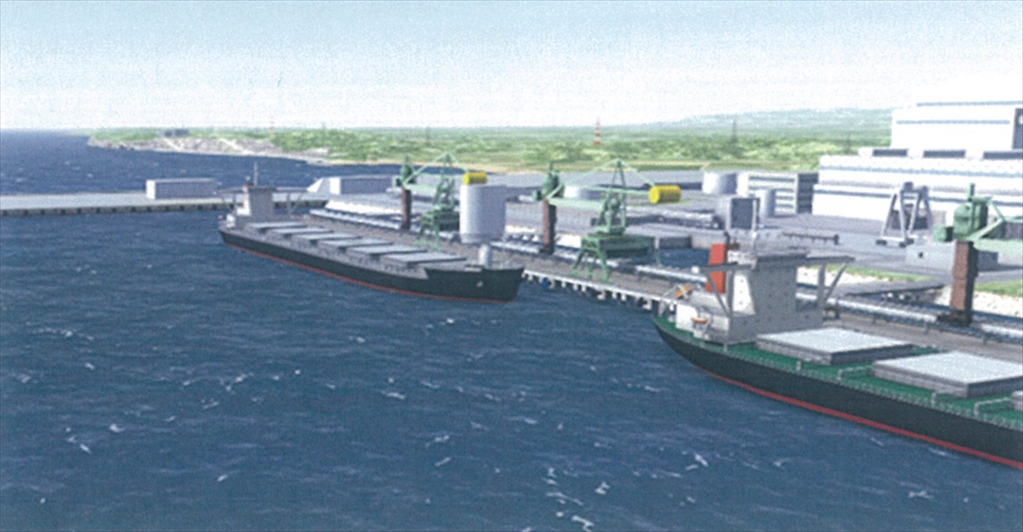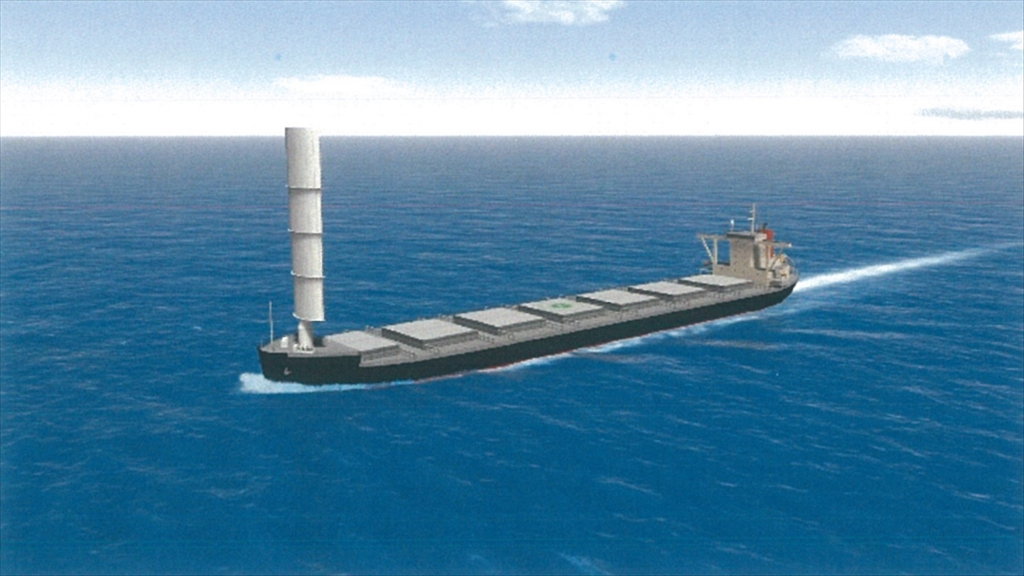Standing World’s 1st Coal Carrier with a “Sail” to Achieve Environmental and Economic Objectives
Mitsui O.S.K. Lines, Ltd. (MOL) and Tohoku Electric Power Co.,Inc today announced both companies’ intention to move ahead with a joint study related to the installation of world’s first hard sail system (Wind Challenger) on a coal carrier.

Wind Challenger is a telescoping hard sail to convert wind energy to propulsive force, studied in “Wind Challenger Project”, which MOL take part as a leading member. Installation of the system on merchant ships has the potential to significantly reduce fuel consumption, which in turn reduces the environmental impact of vessel operation while improving economic efficiency.
MOL and Tohoku Electric have jointly studied the installation of the Wind Challenger on the coal carriers that transport coal to Tohoku Electric’s thermal power plants. Recently, it was confirmed that a vessel equipped with the Wind Challenger is acceptable in port facilities of the coal thermal power plants owned by Tohoku Electric, so the companies decided to move ahead with a full-scale joint study.
Both companies plan to verify the system’s impact on discharging operation and calling in/out at coal unloading port facilities, its effect on reduction of greenhouse gas (GHG) emissions while the vessel is underway, and other factors, with an eye toward launching the world’s first vessel equipped with the Wind Challenger after 2022.

*1 The Wind Challenger Project started in 2009 with the “Wind Challenger Plan”, an industry-academia joint research project led by the University of Tokyo, and in January 2018, MOL and Oshima Shipbuilding took charge of the plan and now play a central role in this project. This year, it acquired Approval in Principle (AIP) for the design of a hard sail system, and its certificate presentation ceremony was held on October 3.
*2 The use of a hard sail can reduce a vessel’s GHG emissions by about 5% on a Japan-Australia voyage, and by about 8% on a Japan-North America West Coast voyage, in comparison with same type of vessel without a sail.
Source: MOL